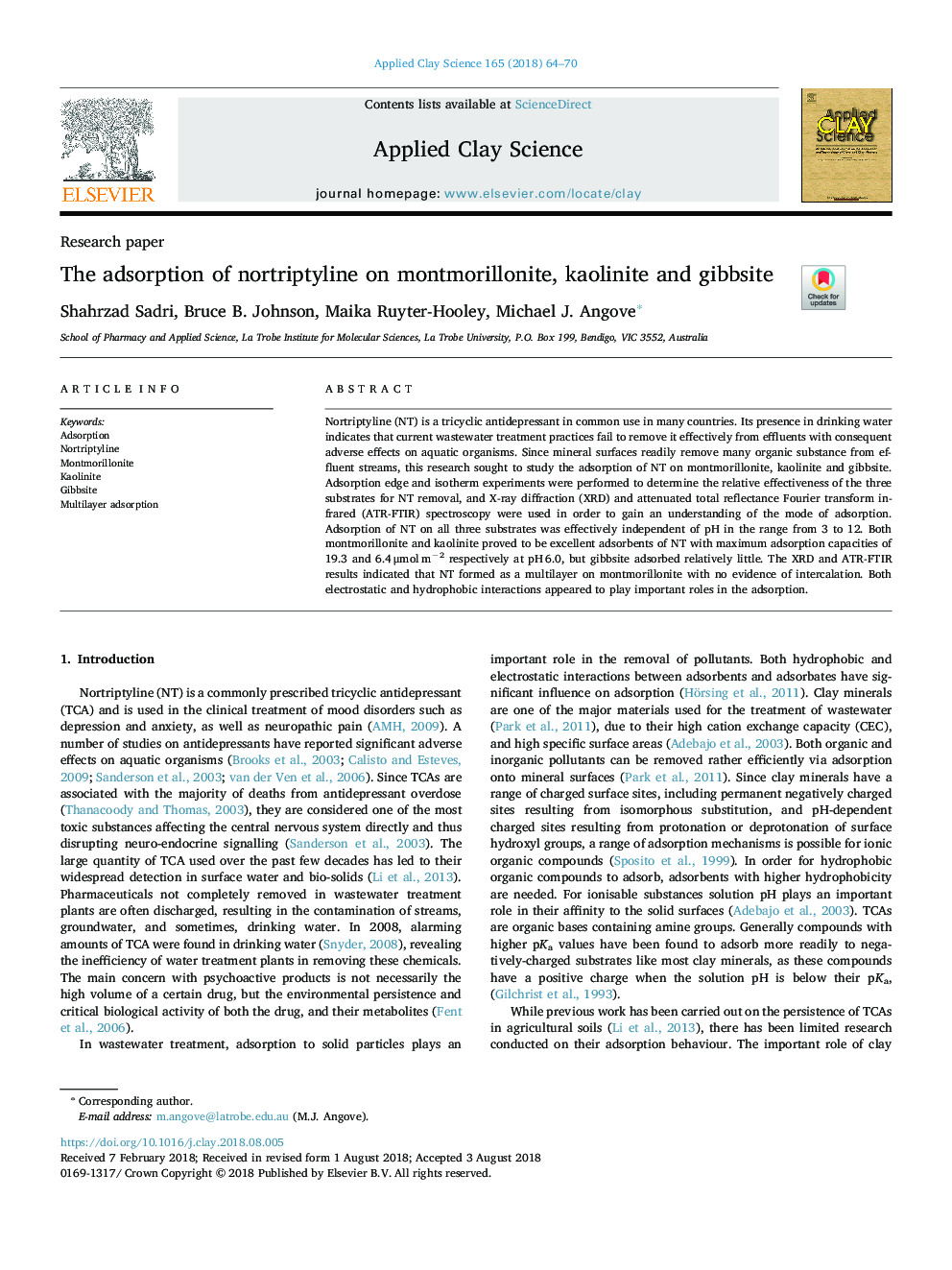| Article ID | Journal | Published Year | Pages | File Type |
|---|---|---|---|---|
| 8045537 | Applied Clay Science | 2018 | 7 Pages |
Abstract
Nortriptyline (NT) is a tricyclic antidepressant in common use in many countries. Its presence in drinking water indicates that current wastewater treatment practices fail to remove it effectively from effluents with consequent adverse effects on aquatic organisms. Since mineral surfaces readily remove many organic substance from effluent streams, this research sought to study the adsorption of NT on montmorillonite, kaolinite and gibbsite. Adsorption edge and isotherm experiments were performed to determine the relative effectiveness of the three substrates for NT removal, and X-ray diffraction (XRD) and attenuated total reflectance Fourier transform infrared (ATR-FTIR) spectroscopy were used in order to gain an understanding of the mode of adsorption. Adsorption of NT on all three substrates was effectively independent of pH in the range from 3 to 12. Both montmorillonite and kaolinite proved to be excellent adsorbents of NT with maximum adsorption capacities of 19.3 and 6.4â¯Î¼molâ¯mâ2 respectively at pHâ¯6.0, but gibbsite adsorbed relatively little. The XRD and ATR-FTIR results indicated that NT formed as a multilayer on montmorillonite with no evidence of intercalation. Both electrostatic and hydrophobic interactions appeared to play important roles in the adsorption.
Related Topics
Physical Sciences and Engineering
Earth and Planetary Sciences
Geochemistry and Petrology
Authors
Shahrzad Sadri, Bruce B. Johnson, Maika Ruyter-Hooley, Michael J. Angove,
